It looks like you're using an Ad Blocker.
Please white-list or disable AboveTopSecret.com in your ad-blocking tool.
Thank you.
Some features of ATS will be disabled while you continue to use an ad-blocker.
26
share:
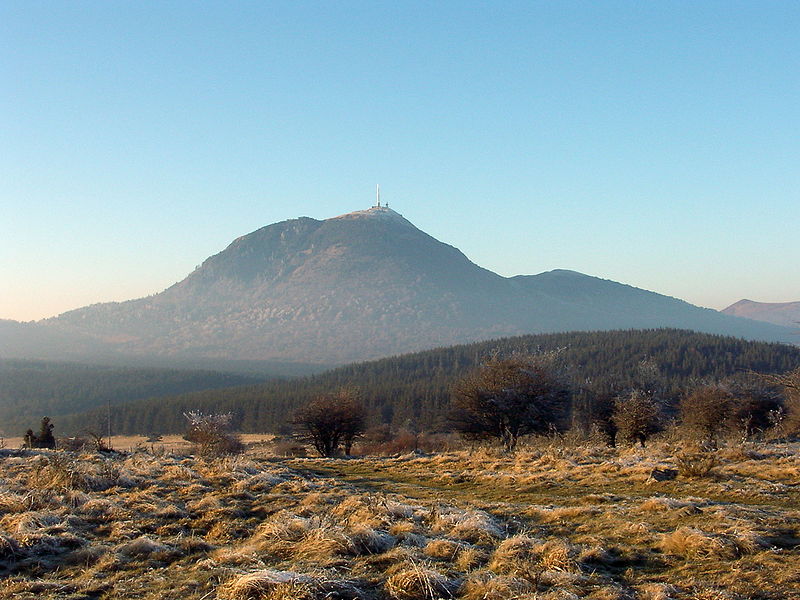
At the Puy-de-Dome in the Central Massif region of France perched high upon a volcanic mount one finds side by side with the modern tele-communications equipment an ancient Temple of Mercury, from the time when Mercury ruled the airwaves

The majestic promontory simply invites one to take to the air and soar upon the thermals, and not surprisingly it is a very popular site for hang gliders who flitter around the mount like winged celestial beings of ancient myth.
I want to look at this site here, and explore some of the deeper connections of Mercury to the airwaves.
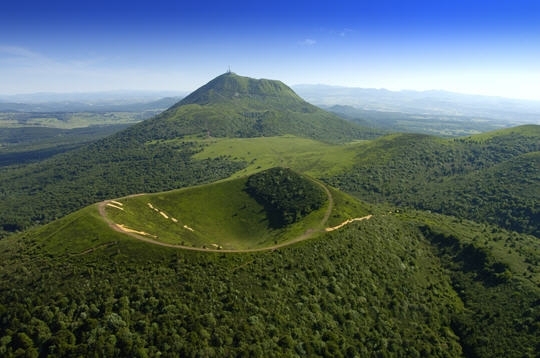
In pre-Christian Europe, Puy de Dôme served as an assembly place for spiritual ceremonies. Temples were built at the summit, including a Gallo-Roman temple dedicated to the God Mercury, the ruins of which were covered in 1873.
In 1648, Florin Périer, at the urging of Blaise Pascal, proved Evangelista Torricelli's theory that barometric servations were caused by the weight of air by measuring the height of a column of mercury at three elevations on Puy de Dôme.
In 1875, a physics laboratory was built at the summit. Since 1956, a TDF (Télédiffusion de France) antenna is also located there.
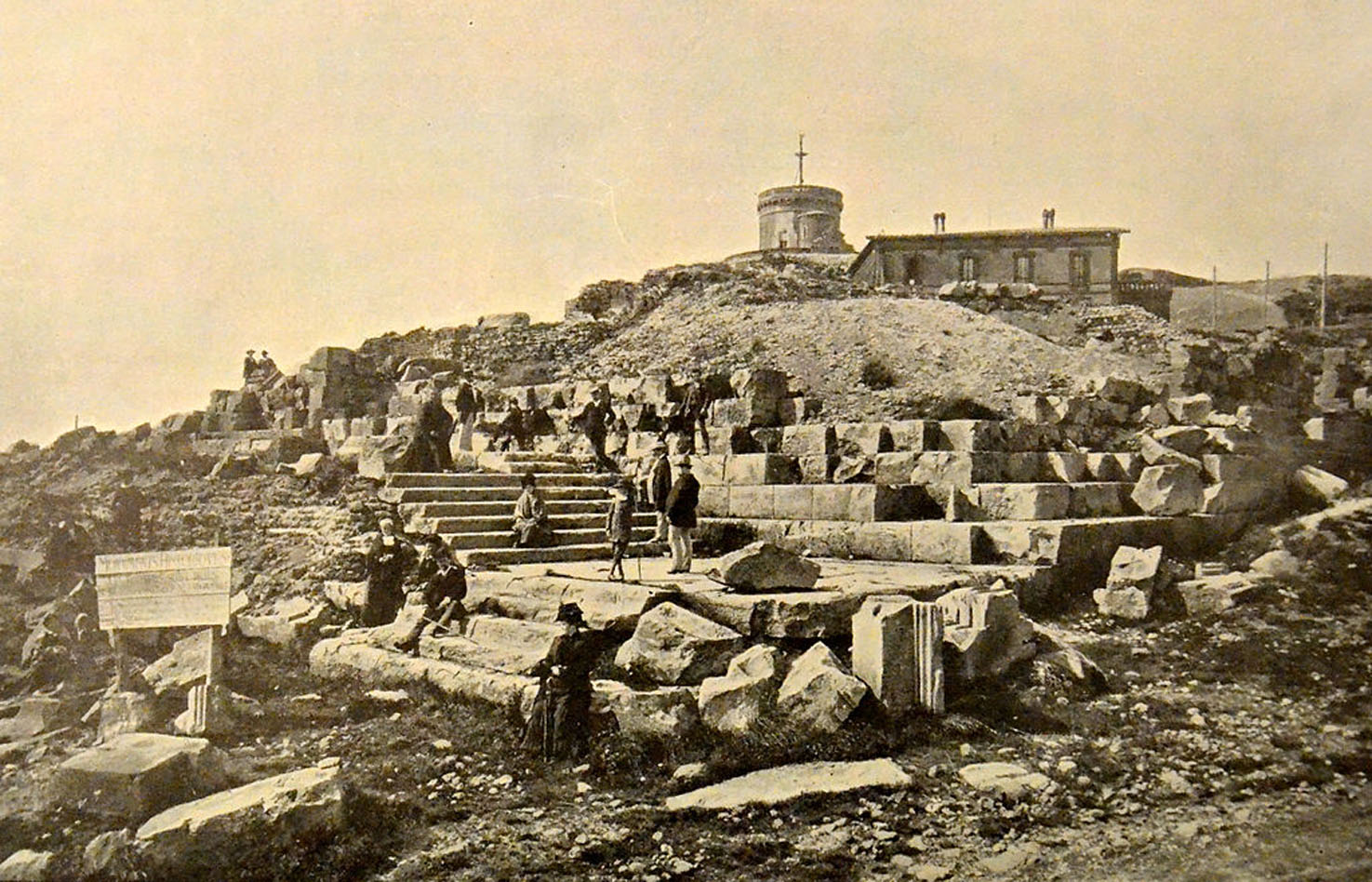
Temple Mercure Puy de Dome
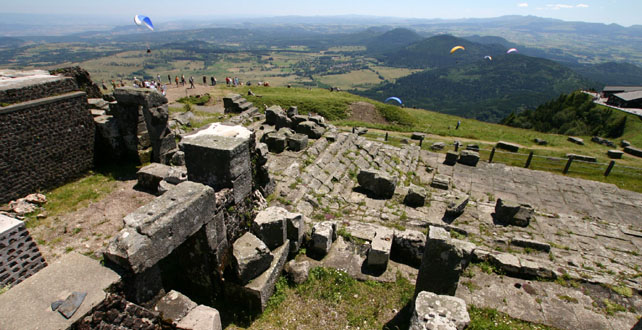
In it's day the Temple was a very imposing edifice constructed a great expense, with a large and magnificent statue of Mercury dominating the landscape all around, belwo one finds a fly-through reconstruction of the site which is well done;
Temple of Mercury fly-through
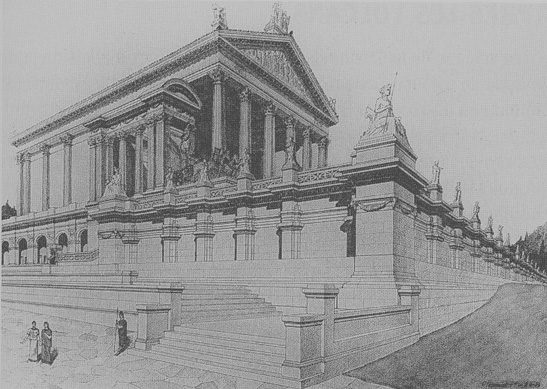
Mercury is the supreme god in Gaul. To be sure, it is Jupiter who reigns over the heavens and Mars who rotects many ciuitates, but in Gaul, Mercury is master of his own domain. The epigraphic dedications that invoke him are more numerous than those that honour the Father of the Gods in many Gaulish provinces (including hose of Gallia Belgica and Lugdunensis).
As for statues, one of Gaul’s most famous was that dedicated to Mercury at the Puy de Dôme in Auvergne in what is now central France. The Arverni had given the Greek sculptor Zenodorus the commission of casting this monumental statue at the price of four million sesterces.
Deo Mercurio
In French painting of the Neo-Classical period there was renewed interest in Mercury/Hermes role as an establisher of paths, networks, and the Herm stones that were the markers of these pathways, generally in association with Bacchanals, were Hermes is covered, the secret Hermetic ordering.
This role as seeker out of pathways and networks is commonly ascribed in shamanic practise to a Deity associated with bees, as they are seen to discover and trace every source within nature, to the extent of the four corners of the Earth.
This bee Deity is also a psychopomp, in that he also guides between the land of the living and the Underworld, as was the case with Hermes.
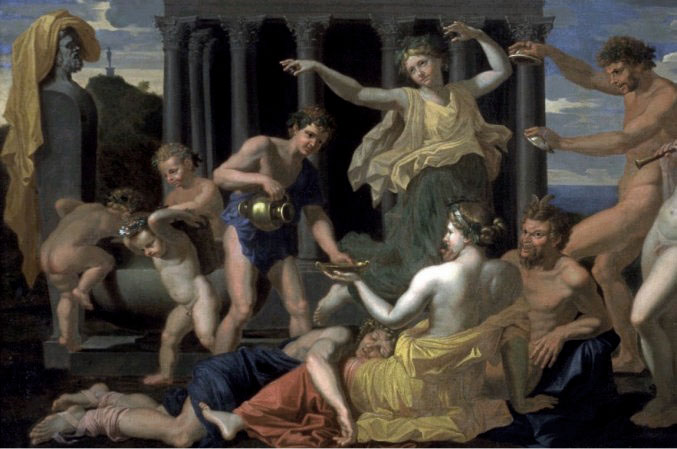
“But I will tell you another thing, Son of all- glorious Maia and Zeus who holds the aegis, luck-bringing genius of the gods. There are certain holy ones, sisters born -- three virgins gifted with wings: their heads are besprinkled with white meal, and they dwell under a ridge of Parnassus. These are teachers of divination apart from me … From their home they fly now here, now there, feeding on honey-comb and bringing all things to pass. And when they are inspired through eating yellow honey, they are willing to speak truth; but if they be deprived of the gods' sweet food, then they speak falsely, as they swarm in and out together.”
In the Greek tradition Apollo and Hermes are not Bee Gods as such, but it is from their maternal nurturing that these aspects are passed on, Apollo makes a gift of the three bee-maiden priestesses to the God Hermes. as Hermes was guide to the souls of the dead not only out of life but also back into it again.
The cult of the Bee was understood as feminine by the Greeks, 'Melissae', honey-priestesses, inspired by a honey-intoxicant; were bees, their heads white with pollen, but this is an underlying aspect of the cults of Apollo and Hermes.
The aspect of ruling the airwaves is thus derivative of this bee symbolism.
The Greek word for ‘fate’, ‘death’ and ‘goddess of death’ is ‘e ker’ (feminine); the word for’heart’ and ‘breast’ is ‘to ker’ (neuter); while the word for ‘honeycomb’ is ‘to kerion’ (neuter). The common root ‘ker’ links the ideas of the honeycomb, goddess, death, fate and the human heart, a nexus of meanings that is illumined if we know that the goddess was once imagined as a bee.”
High at the head a branching olive grows And crowns the pointed cliffs with shady boughs.
A cavern pleasant, though involved in night, Beneath it lies, the Naiades delight:
Where bowls and urns of workmanship divine And massy beams in native marble shine;
On which the Nymphs amazing webs display, Of purple hue and exquisite array,
The busy bees within the urns secure Honey delicious, and like nectar pure.
Perpetual waters through the grotto glide,
A lofty gate unfolds on either side;
That to the north is pervious to mankind:
The sacred south t'immortals is consign'd."

The concern of the bee nymphs was with weaving and patterns of fate, the production of honey, the soul was symbolized as a bee. The caverns in which they dwelt had association of portals between the realm of the living and the spiritual, and the humming of bees indicated the closeness and inter-connectivity of the two.
In swarms while wandering, from the dead, A humming sound is heard.
The 3rd century Greek philosopher and mathematician Porphyry of Tyre believed that souls arrived on earth in the form of Bees, having descended from the moon goddess Artemis, and that they were lured to terrestrial life by the promise of earthly delights, such as honey. Ironically, honey was also a symbol of death and was frequently used as an offering to the gods. The dualistic quality of honey is no coincidence, as the nectar and its maker – the Bee, appear to represent the very cycle of existence. One could say that as the Bee returns to its hive, so the Melissa returns to its god in the afterlife; the beginning is the end and the end is the beginning.
edit on 6-7-2013 by Kantzveldt because: (no reason given)
Beautiful and interesting. Nothing else I can add just wanted to let you know...
The things I find interesting.
A new "Communications" Tower(Temple) built right next to the ancient one. What is the significance? Just a high spot, but why was that important to the gods, sure we know closer to heaven closer to the gods but was it actually more significant?
And again an odd combination of Celtic and Mediterranean architecture. Or was it instead an older style that went on and influenced both cultures?
Within the temple was an inscription
NUM [inibus] AUG [ustorum] AND WD MERCURI DUMIATI MATUTINIUS VICTORINUS
usually translated as...
"In the name of Augustus and the god Mercury dome, Matutinius Victorinus."
But with a very interesting google translation from me adding a pinch of Sanskrit (Dumiati is fascinating ambiguous and sometimes female name...)
The Great and Just god Mercury the Bright One of the Early Dawn of Morning
Perhaps this being in Gaul, Lugh or Lugus or Lug or even Loki...would understand the true inscription wouldn't you say?
Funny how Lug is yet another deity who is 3 in 1.
Also funny I was just mentioning the other night in another thread how I wished to drink the sweet nectar of life. If we are conversing about Mercury, perhaps Rosmerta wont be far behind and will poor a libation of Ambrosia from her patera for me to drink?
What is the message here I wonder...
A new "Communications" Tower(Temple) built right next to the ancient one. What is the significance? Just a high spot, but why was that important to the gods, sure we know closer to heaven closer to the gods but was it actually more significant?
And again an odd combination of Celtic and Mediterranean architecture. Or was it instead an older style that went on and influenced both cultures?
Within the temple was an inscription
NUM [inibus] AUG [ustorum] AND WD MERCURI DUMIATI MATUTINIUS VICTORINUS
usually translated as...
"In the name of Augustus and the god Mercury dome, Matutinius Victorinus."
But with a very interesting google translation from me adding a pinch of Sanskrit (Dumiati is fascinating ambiguous and sometimes female name...)
The Great and Just god Mercury the Bright One of the Early Dawn of Morning
Perhaps this being in Gaul, Lugh or Lugus or Lug or even Loki...would understand the true inscription wouldn't you say?
Funny how Lug is yet another deity who is 3 in 1.
Also funny I was just mentioning the other night in another thread how I wished to drink the sweet nectar of life. If we are conversing about Mercury, perhaps Rosmerta wont be far behind and will poor a libation of Ambrosia from her patera for me to drink?
What is the message here I wonder...
edit on 7-7-2013 by abeverage because: (no reason given)
reply to post by abeverage
The high places were important because the setting out of the network of the land was considered as from above, they were the pre-eminent points. Many of them later became dedicated to the Archangel Michael in Christian times, so they were seats of Celestial Power over seeing the land.
The trappings of the cult would appear entirely Roman, before this period the Celts neither named or depicted Deities, the names that were transmitted into Roman comparatives tended to be descriptive terms derivative of natural description and specific to locale, as in the example of Dumiati, of the dome, which could carry through to the Celestial dome.
Lugh would have been the Celtic descriptive term, from the Indo-European 'leuk', the bright flashing light.
The association of Rosmerta as the companion of Celtic Mercury is that her rewards of all good things were the product of Mercurial endeavours, that is the illumination of artisans and craftsmen, the establishment of good relations and lines of communication facilitating trade, the transmission of knowledge and learning for the advancement of society, all good fortune brought about by the active principle of Mercury, the reward of the fruits of the Earth.
In a sense this is things coming full circle from the maternal origins from Maia, and the tutelage of the bee nymphs and their weavings of fate, it is Mercury that makes things happen for the maidens that dwell in the cavernous depths.
There is a funny story of when i got sent on a team building seminar from work which filled me with horror, but anyway at the end of the session they ran the session worker decided to end it with a guided group meditation sort of thing, as she'd come across a piece she thought great by some proffessor of psycho babble, so we had to close our eyes and she went on about individuals starting off alone in a forest, meeting up gradually, finding paths, arriving at waterfalls, chasms that could only be flown across, a high place at journeys end, and then asked what people had seen and felt.
So the usual lame answers, nothing or it felt really nice blah blah, but then she asked me and i named off around fifteen epitaphs of Mercury that related to the elements of the progression in sequential order, and she just looked at me slack jawed like i was from another planet lol
There weren't supposed to be any 'correct' answers and religion let alone such a seemingly well organized one just wasn't on the agenda, so they were seriously dazzled by this light...and i never made a good team player.
reply to post by LizardSlicks
Well thanks for that
The high places were important because the setting out of the network of the land was considered as from above, they were the pre-eminent points. Many of them later became dedicated to the Archangel Michael in Christian times, so they were seats of Celestial Power over seeing the land.
The trappings of the cult would appear entirely Roman, before this period the Celts neither named or depicted Deities, the names that were transmitted into Roman comparatives tended to be descriptive terms derivative of natural description and specific to locale, as in the example of Dumiati, of the dome, which could carry through to the Celestial dome.
Lugh would have been the Celtic descriptive term, from the Indo-European 'leuk', the bright flashing light.
The association of Rosmerta as the companion of Celtic Mercury is that her rewards of all good things were the product of Mercurial endeavours, that is the illumination of artisans and craftsmen, the establishment of good relations and lines of communication facilitating trade, the transmission of knowledge and learning for the advancement of society, all good fortune brought about by the active principle of Mercury, the reward of the fruits of the Earth.
In a sense this is things coming full circle from the maternal origins from Maia, and the tutelage of the bee nymphs and their weavings of fate, it is Mercury that makes things happen for the maidens that dwell in the cavernous depths.
There is a funny story of when i got sent on a team building seminar from work which filled me with horror, but anyway at the end of the session they ran the session worker decided to end it with a guided group meditation sort of thing, as she'd come across a piece she thought great by some proffessor of psycho babble, so we had to close our eyes and she went on about individuals starting off alone in a forest, meeting up gradually, finding paths, arriving at waterfalls, chasms that could only be flown across, a high place at journeys end, and then asked what people had seen and felt.
So the usual lame answers, nothing or it felt really nice blah blah, but then she asked me and i named off around fifteen epitaphs of Mercury that related to the elements of the progression in sequential order, and she just looked at me slack jawed like i was from another planet lol
There weren't supposed to be any 'correct' answers and religion let alone such a seemingly well organized one just wasn't on the agenda, so they were seriously dazzled by this light...and i never made a good team player.
reply to post by LizardSlicks
Well thanks for that
edit on 7-7-2013 by Kantzveldt because: (no reason given)
Originally posted by Kantzveldt
reply to post by abeverage
The high places were important because the setting out of the network of the land was considered as from above, they were the pre-eminent points. Many of them later became dedicated to the Archangel Michael in Christian times, so they were seats of Celestial Power over seeing the land.
I don't necessarily have an Ancient Alien bent in any of my thoughts on Ancient History. I do however believe Humanity has been to several peaks and valleys in their progress. I believe many sacred sites have lost their meaning form a truly ancient culture who had a form of technology that outstripped ours (Whether that came from humans or Alien gods is always debatable). Something important happened at this and other sites and it is no wonder we build a modern form of a temple in the shape of a communications tower.
The trappings of the cult would appear entirely Roman, before this period the Celts neither named or depicted Deities, the names that were transmitted into Roman comparatives tended to be descriptive terms derivative of natural description and specific to locale, as in the example of Dumiati, of the dome, which could carry through to the Celestial dome.
I don't know enough about the Ancient Celts to add much here but I just love that Dumiati has an older Sanskrit (although debatable unknown) origin of a female name, meaning "Bright Intellect" and the Dome of any building represents the breast or the womb.
Lugh would have been the Celtic descriptive term, from the Indo-European 'leuk', the bright flashing light.
Again I am reminded of the current era's tower warning passing planes lol but I digress.
The association of Rosmerta as the companion of Celtic Mercury is that her rewards of all good things were the product of Mercurial endeavours, that is the illumination of artisans and craftsmen, the establishment of good relations and lines of communication facilitating trade, the transmission of knowledge and learning for the advancement of society, all good fortune brought about by the active principle of Mercury, the reward of the fruits of the Earth.
Rosmerta is one of those goddesses that always seems to appear with the patron god that old adage behind every great man is a woman sort of deity. I did find an excellent recipe for her pumpkin juice with added honey for flavor...
There is a funny story of when i got sent on a team building seminar from work which filled me with horror, but anyway at the end of the session they ran the session worker decided to end it with a guided group meditation sort of thing, as she'd come across a piece she thought great by some proffessor of psycho babble, so we had to close our eyes and she went on about individuals starting off alone in a forest, meeting up gradually, finding paths, arriving at waterfalls, chasms that could only be flown across, a high place at journeys end, and then asked what people had seen and felt.
So the usual lame answers, nothing or it felt really nice blah blah, but then she asked me and i named off around fifteen epitaphs of Mercury that related to the elements of the progression in sequential order, and she just looked at me slack jawed like i was from another planet lol
There weren't supposed to be any 'correct' answers and religion let alone such a seemingly well organized one just wasn't on the agenda, so they were seriously dazzled by this light...and i never made a good team player.
Perhaps you just have not found "your" right team!
edit on 7-7-2013 by abeverage because: (no reason given)
reply to post by abeverage
I think that the advanced wisdom of the ancient world is derivative of aspects of the Divine and this particularly so through it becoming incarnate, hence the Demi-God traditions
The importance of Puy-De-Dome is that there is no distinction between the modern tele-communications apparatus, the physics research establishment, and the tradition of nearby Clermont-Ferrand being the scientific heart of France, these are all aspects of Mercurial intellect and the communication of such, Mercury is the God of the internet, communication at such speeds it is almost instantaneous.
There is also the negative aspect of Mercury, were a great deal is communicated, but it is entirely shallow and false, relationships are counter productive, people are sent down blind alleys that lead nowhere, everything seems essentially pointless, this can be much observed hereabouts...
The Olympians had a curious sense of team spirit, often they were conspiring amongst themselves, engaging in factionalism, and all manner of disturbing activities, which produced a balance of sorts, but also the potential for change, the modern sense of the team player is the conformist drone.
I think that the advanced wisdom of the ancient world is derivative of aspects of the Divine and this particularly so through it becoming incarnate, hence the Demi-God traditions
The importance of Puy-De-Dome is that there is no distinction between the modern tele-communications apparatus, the physics research establishment, and the tradition of nearby Clermont-Ferrand being the scientific heart of France, these are all aspects of Mercurial intellect and the communication of such, Mercury is the God of the internet, communication at such speeds it is almost instantaneous.
There is also the negative aspect of Mercury, were a great deal is communicated, but it is entirely shallow and false, relationships are counter productive, people are sent down blind alleys that lead nowhere, everything seems essentially pointless, this can be much observed hereabouts...
The Olympians had a curious sense of team spirit, often they were conspiring amongst themselves, engaging in factionalism, and all manner of disturbing activities, which produced a balance of sorts, but also the potential for change, the modern sense of the team player is the conformist drone.
reply to post by Kantzveldt
I am very surprised a Christian church was not built on the site as was common but it may be that the temple itself may have been rededicated, what a beautiful sight it must have been, a good translation since mercury was the messenger of the god's would be the temple of the angel's or of Michael though mercury was more a Gabriel type figure.
I would love to see that site reconstructed as it was or even as the fly through imagined it was.
I am very surprised a Christian church was not built on the site as was common but it may be that the temple itself may have been rededicated, what a beautiful sight it must have been, a good translation since mercury was the messenger of the god's would be the temple of the angel's or of Michael though mercury was more a Gabriel type figure.
I would love to see that site reconstructed as it was or even as the fly through imagined it was.
reply to post by Kantzveldt
Excellent. I have been curious as to what the bee stood for in so many esoteric motifs through the ages. That they are a handy metaphor for the soul makes much sense and the buzzing present with many "paranormal" experiences is an interesting muse, but there might be even more detail there about the symbol that remains elusive to the non-formally initiated.
Put it with the liminal realms, the Trickster's place of worship in breathtaking French countryside and the result is magnetic to those drawn to the hidden... so (clap... clap...) with solemn admiration.
And what are the broader, possible meta meanings for the great bee die-off of late...?
Excellent. I have been curious as to what the bee stood for in so many esoteric motifs through the ages. That they are a handy metaphor for the soul makes much sense and the buzzing present with many "paranormal" experiences is an interesting muse, but there might be even more detail there about the symbol that remains elusive to the non-formally initiated.
Put it with the liminal realms, the Trickster's place of worship in breathtaking French countryside and the result is magnetic to those drawn to the hidden... so (clap... clap...) with solemn admiration.
And what are the broader, possible meta meanings for the great bee die-off of late...?
reply to post by Kantzveldt
I recently looked up Mercury (planet) to read about visibility from Earth:
Do you think that it is possible that before people realized that it was the same planet that they were seeing, that they thought it was two different planets? A morning star and an evening star. Is it further possible that Apollo was considered to be the morning star pulling the Sun behind him?
Apollo and Hermes were actually the same planet, but people didn't know it. When they figured it out then Apollo was then given Sun god status. I sort of remember a children's story rendition of Greek mythology wherein someone not Apollo wanted to pull the Sun chariot, and the sad result of inexperience was deserts in the World.
In the Greek tradition Apollo and Hermes are not Bee Gods as such, but it is from their maternal nurturing that these aspects are passed on, Apollo makes a gift of the three bee-maiden priestesses to the God Hermes. as Hermes was guide to the souls of the dead not only out of life but also back into it again.
I recently looked up Mercury (planet) to read about visibility from Earth:
Naked-eye viewing
Mercury is seen most easily when it is close to its greatest elongation, which means that its angular separation from the Sun is greatest. It can be near greatest western elongation, which means it is west of the Sun in the sky, so it is visible soon before sunrise, or greatest eastern elongation, which means it is visible soon after sunset.
Ancient astronomers
As a morning star, the planet was known as Heosphorus, a sobriquet it shared with Venus whose morning appearance was also called Phosphorus; likewise the evening apparitions of Mercury and Venus alike were called Hesperus.
Do you think that it is possible that before people realized that it was the same planet that they were seeing, that they thought it was two different planets? A morning star and an evening star. Is it further possible that Apollo was considered to be the morning star pulling the Sun behind him?
Apollo and Hermes were actually the same planet, but people didn't know it. When they figured it out then Apollo was then given Sun god status. I sort of remember a children's story rendition of Greek mythology wherein someone not Apollo wanted to pull the Sun chariot, and the sad result of inexperience was deserts in the World.
I live in texas and I know im in the highest peak above sea level when I see radio towers. lets face it radio towers work best at their highest peak.
most companies don't care about history they care about delivering the best quality service. I think they are thinking about money mostly due to
quality of their product.
reply to post by Baddogma
The bee as a metaphor for the spirit of the deceased within the ether also carries the dualistic distinction of those whose hearts were as gold as gold and those whose hearts were dark, as was determined by fate.
As the bee nymphs are located at an entrance between the Heavens and the Underworld they faciliitate entrance into those realms for souls, but also potentially the return of souls through those portals into the realm of the living, they can cause re-incarnation.
The bee die-off is caused by those who put profit above nature, bees like fate have a sting in the tail.
reply to post by pthena
I don't think they were ever understood as two planets, i know this is claimed with regards to Venus and Mercury, but they were simply given very distinct aspects for the role of evening star or morning, these later tended to become merged, at the period when this assumption is given there was actually a very sophisticated sub-division of the ecliptic plane according to planetary orbital periodics.
Apollo was always understood as a Deity that transcended the polarity of ultimate darkness from Celestial North to its opposite at the zenith of the Sun in the Southern skies, he wasn't a Sun God as such therefore, but achieved that degree of illumination, as a God that made manifest the light he shared some aspects of his cult with Mercury therefore who stole some of his cattle as it were.
reply to post by LABTECH767
yes it is unusual that such an important site would have been left untouched, only uncovered in 1873, but then it does seem quite isolated.
reply to post by Foxy1
Yes obviously the tele-communication equipment is there for practical reasons, the physics research building perhaps also at the time it was constructed, as they were doing atmospheric research involving air pressure and liquid Mercury, but it is a happy coming together of the old and the new.
The bee as a metaphor for the spirit of the deceased within the ether also carries the dualistic distinction of those whose hearts were as gold as gold and those whose hearts were dark, as was determined by fate.
As the bee nymphs are located at an entrance between the Heavens and the Underworld they faciliitate entrance into those realms for souls, but also potentially the return of souls through those portals into the realm of the living, they can cause re-incarnation.
The bee die-off is caused by those who put profit above nature, bees like fate have a sting in the tail.
reply to post by pthena
I don't think they were ever understood as two planets, i know this is claimed with regards to Venus and Mercury, but they were simply given very distinct aspects for the role of evening star or morning, these later tended to become merged, at the period when this assumption is given there was actually a very sophisticated sub-division of the ecliptic plane according to planetary orbital periodics.
Apollo was always understood as a Deity that transcended the polarity of ultimate darkness from Celestial North to its opposite at the zenith of the Sun in the Southern skies, he wasn't a Sun God as such therefore, but achieved that degree of illumination, as a God that made manifest the light he shared some aspects of his cult with Mercury therefore who stole some of his cattle as it were.
reply to post by LABTECH767
yes it is unusual that such an important site would have been left untouched, only uncovered in 1873, but then it does seem quite isolated.
reply to post by Foxy1
Yes obviously the tele-communication equipment is there for practical reasons, the physics research building perhaps also at the time it was constructed, as they were doing atmospheric research involving air pressure and liquid Mercury, but it is a happy coming together of the old and the new.
edit on 8-7-2013 by Kantzveldt because: (no reason given)
Great post. I was previously unaware of that particular temple. I am very intrigued in the bee representations throughout ancient cultures. This is
something to study further. I do agree with the previous post, being the interesting coincidence that a comms tower is in the same spot as the temple
for the god of communications.
Thank you for the fly through video. I always enjoy artist representations of ancient sites. The closest thing we have to viewing it in all it's glory.
Thank you for the fly through video. I always enjoy artist representations of ancient sites. The closest thing we have to viewing it in all it's glory.
new topics
-
George Knapp AMA on DI
Area 51 and other Facilities: 3 hours ago -
Not Aliens but a Nazi Occult Inspired and then Science Rendered Design.
Aliens and UFOs: 3 hours ago -
Louisiana Lawmakers Seek to Limit Public Access to Government Records
Political Issues: 6 hours ago -
The Tories may be wiped out after the Election - Serves them Right
Regional Politics: 7 hours ago -
So I saw about 30 UFOs in formation last night.
Aliens and UFOs: 9 hours ago -
Do we live in a simulation similar to The Matrix 1999?
ATS Skunk Works: 10 hours ago -
BREAKING: O’Keefe Media Uncovers who is really running the White House
US Political Madness: 10 hours ago -
Biden--My Uncle Was Eaten By Cannibals
US Political Madness: 11 hours ago -
"We're All Hamas" Heard at Columbia University Protests
Social Issues and Civil Unrest: 11 hours ago
top topics
-
BREAKING: O’Keefe Media Uncovers who is really running the White House
US Political Madness: 10 hours ago, 23 flags -
Biden--My Uncle Was Eaten By Cannibals
US Political Madness: 11 hours ago, 18 flags -
George Knapp AMA on DI
Area 51 and other Facilities: 3 hours ago, 17 flags -
African "Newcomers" Tell NYC They Don't Like the Free Food or Shelter They've Been Given
Social Issues and Civil Unrest: 16 hours ago, 12 flags -
"We're All Hamas" Heard at Columbia University Protests
Social Issues and Civil Unrest: 11 hours ago, 7 flags -
Louisiana Lawmakers Seek to Limit Public Access to Government Records
Political Issues: 6 hours ago, 7 flags -
Russian intelligence officer: explosions at defense factories in the USA and Wales may be sabotage
Weaponry: 15 hours ago, 6 flags -
So I saw about 30 UFOs in formation last night.
Aliens and UFOs: 9 hours ago, 5 flags -
The Tories may be wiped out after the Election - Serves them Right
Regional Politics: 7 hours ago, 3 flags -
Not Aliens but a Nazi Occult Inspired and then Science Rendered Design.
Aliens and UFOs: 3 hours ago, 3 flags
active topics
-
MULTIPLE SKYMASTER MESSAGES GOING OUT
World War Three • 33 • : Halfswede -
Candidate TRUMP Now Has Crazy Judge JUAN MERCHAN After Him - The Stormy Daniels Hush-Money Case.
Political Conspiracies • 371 • : YourFaceAgain -
-@TH3WH17ERABB17- -Q- ---TIME TO SHOW THE WORLD--- -Part- --44--
Dissecting Disinformation • 530 • : cherokeetroy -
George Knapp AMA on DI
Area 51 and other Facilities • 12 • : theshadowknows -
Not Aliens but a Nazi Occult Inspired and then Science Rendered Design.
Aliens and UFOs • 7 • : JonnyC555 -
So I saw about 30 UFOs in formation last night.
Aliens and UFOs • 19 • : rigel4 -
Mood Music Part VI
Music • 3057 • : BatCaveJoe -
The Tories may be wiped out after the Election - Serves them Right
Regional Politics • 19 • : alwaysbeenhere2 -
"We're All Hamas" Heard at Columbia University Protests
Social Issues and Civil Unrest • 125 • : KrustyKrab -
Biden--My Uncle Was Eaten By Cannibals
US Political Madness • 40 • : Kaiju666
26
